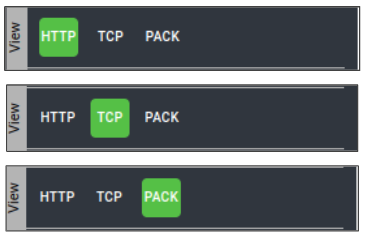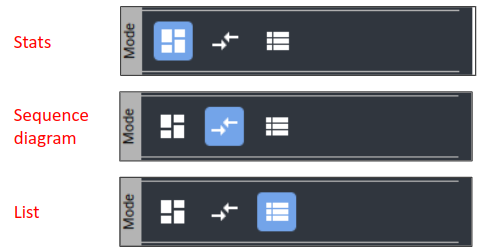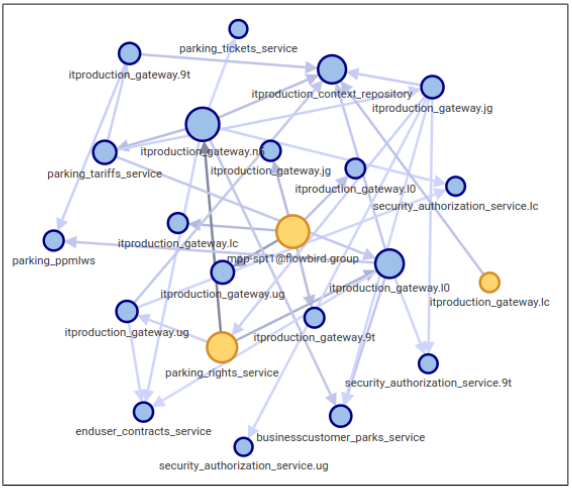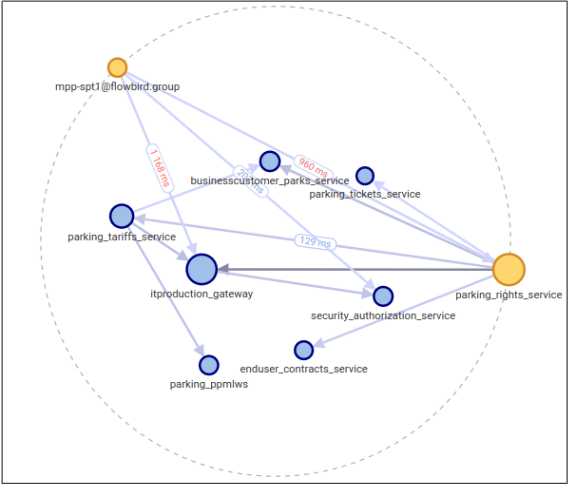Navigate Views and Modes
Views
The different Views are the various protocols of data stored in Spider.
Current ones are:
- IP packets (→ PACK)
- TCP sessions
- HTTP communications

Changing View is done in the menu.
- it impacts all data elements: timeline, map, grid…
- it clears current filters
Modes
The Modes are different ways to work with the data in Spider.
The following modes are available for Captured Data:
- Top Panel modes
- Network Map - Aggregated visual view of the captured data with hosts and links
- Dashboard - Set of widgets show key metrics
- Bottom Panel modes
- Stats - Allows computing statistics on various axes and combined axes
- List - Displays communications one by one in a flexible grid
- Sequence diagram - Displays captured data as a sequence of calls between the clients and servers

Map options
Views have global options, accessible directly aside the menu.
They have a direct impact on the map, but also for some on the Sequence Diagram.
In the order:
- Hide gateways
- Merge replicas
- Move clients outwards
Hide gateways vs Show real calls
On HTTP view, it displays the origin of the call instead of the real source, thus hiding reverse proxies.
Applies to map + seq. diag.
Honestly, you most often always want it active.
Except when you are concerned by your proxies.
Merge replicas vs Show all replicas
On all views, it merges replicas of the same server / service.
Based on the Merging pattern defined in settings, and applied to server FQDN fetched from the DNS.
Applies to Map + Sequence Diagram + Stats.
Honestly, you most often always want it active. Except when you want to see differences between services replicas.
Move clients outwards vs leave client in cluster
Only for the map, it moves clients on the outside of all other nodes, for better visibility.
Result
The 3 combined gives the cleanest result!
Inactive:

Active:

👉 In the HTTP View, click on a record in the Grid to open an HTTP communication.